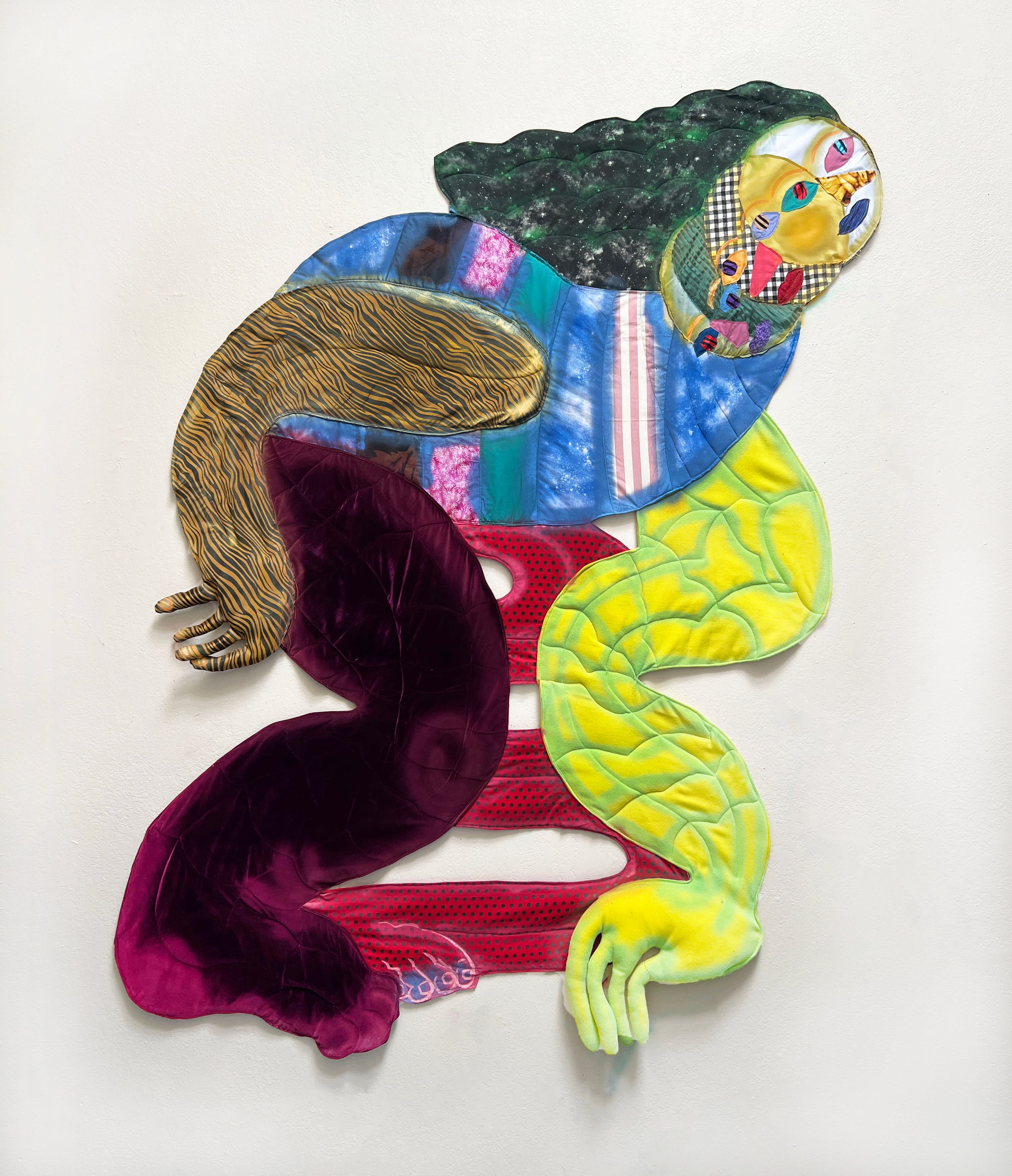
One of the smartest moves the San Francisco Museum of Art has made in recent years coincides with its 2022 SECA Art Award Exhibition, on view through May 29. For the duration of that five-person show of local contemporary artists, the museum’s entire second floor is open to the public for free.
It’s a simple, refreshing premise: Local museum showing local artists (not always a given!) is open to locals. I also choose to view this as an encouraging step towards wider accessibility and affordability (current general admission tickets cost adults $25 each, while special entry to Ragnar Kjartansson’s The Visitors bumps it up to $30).
If my visit on an ordinary Thursday was any indication, free admission has been a wild success. In the five galleries showing work by Binta Ayofemi, Maria A. Guzmán Capron, Cathy Lu, Marcel Pardo Ariza and Gregory Rick, visitors were swirling about with mouths agape, posing for pictures with the work and genuinely enjoying themselves, en masse.
But let me back up a bit. What is this SECA thing? Every two or three years, the museum puts out a call for Bay Area-wide nominations of local artists who have “not received substantial recognition from a major institution.” That large pool is shortened to a finalist list, studio visits follow and the curators — this year, Andrea Nitsche-Krupp, assistant curator of media arts, and Jovanna Venegas, assistant curator of contemporary art — make the final selections.
This SECA show opens with work by Binta Ayofemi, her space demarcated by navy-painted walls that blend down into bands of sherbet hues. A video installation plays a mixture of found and shot footage in triplicate, with Alice Coltrane’s “Journey In Satchidananda” soundtracking the space. Ayofemi blends urban materials (tinted mirrors, a corrugated metal wall) with huge, transplanted pieces of nature (giant blocks of wood, including a cross-cut stump that unfurls like a ribbon from its core). It’s a contemplative space, but it’s also a passageway, befitting its title: Continuum.
In the neighboring gallery, Cathy Lu’s vibrant orange walls play backdrop to Resurgence, an ornate garlanded installation of suspended ceramics. Combining cast fruit with curling, long-nailed hands, Lu’s installation references Nüwa, a Chinese creation goddess who molded humans out of clay (a particularly apropos reference point for a ceramicist). This creation story juxtaposes another, more omnipresent story told in the United States — about the creation of this country, and the opportunities supposedly available to those who seek to shape themselves into an “American Dream.”

MARIA A. GUZMÁN CAPRON, MUCHO MÁS (FOREGROUND), EROS (BACKGROUND), AND LUNA (BACKGROUND) FROM THE INSTALLATION RESPIRA HONDO, SFMOMA. PHOTO: KATHERINE DU TIEL.
Around the corner, Maria A. Guzmán Capron’s gallery creates a similarly dreamy atmosphere with the help of light peach walls. Her hand-sewn textiles, made with wild combinations of patterns, fabrics and touches of paint, often feature bodies entwined so completely they can no longer be separated from each other. In Luna, one face becomes three, with a stream of starry hair flowing behind. And while none of her work is truly two-dimensional, elements of Capron’s pieces bulge into impressive 3-D, with a gigantic soft sculpture of a giantess’ foot — like something out of a fairy tale — taking up the center of the gallery.
The expansiveness of SFMOMA’s space (particularly the gallery’s high ceilings) definitely contributes to some of the scale seen in this year’s SECA exhibition, and Marcel Pardo Ariza’s I Am Very Lucky, Very Lucky to Be Trans takes advantage of that vertical height to arrange a series of photographic portraits across one vertiginous wall. Made in collaboration with 33 Bay Area trans, intersex and gender-nonconforming activists and cultural leaders, the display is part altarpiece, part visual family tree, creating space for visitors to sit and gaze while listening to a compilation of raw and very personal audio histories.

Maria A. Guzmán Capron, Luna, 2022. Fabric, thread, batting, stuffing, spray paint and acrylic paint. 86 x 67 x 3 1/2 in
Last, but definitely not least, is Gregory Rick’s contribution to the award show. In two rooms, his large-scale paintings exert a gravitational pull on the viewer. There are no mood-setting colored walls here; Rick focuses all his attention on the activity packed into each canvas and work on paper. With a variety of media (acrylic, wax pastel, enamel, oil stick, felt-tip pen, the list goes on!), he creates images of community and conflict, layering figures, buildings and vehicles into dense arrangements that all seem to happen on the same plane. People raise their arms in surrender, in joyous dance, in powerful gestures that seem to question how all of this came to be.
Rarely do we get to see work of here and now (that is, the Bay Area and our present moment) in our region’s largest museum. The Joan Brown retrospective on SFMOMA’s top floor encapsulates this perfectly — it’s a show that speaks deeply to this place and the life Brown lived here — but it comes, as many retrospectives do, over three decades after her death. Meanwhile, examples of “now” often come from far away, like New York artist Toyin Ojih Odutola’s current New Work show at the museum (though Odutola did get her MFA from CCA in 2012).
SECA’s a strange outlier from this status quo, and it’s a wholly welcome one: a reminder that artists exist here and now, making work that absolutely deserves packed parties, high ceilings, colorful catalogs and no barriers to entry.




